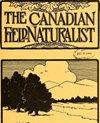A late Pleistocene Wood Turtle (Glyptemys insculpta) from Iowa, USA: response of the taxon to glaciation and formation of the current range
Q4 Agricultural and Biological Sciences
引用次数: 0
Abstract
The partial shell of a Wood Turtle (Glyptemys insculpta) was collected from the West Branch of the East Nishnabotna River in southwestern Iowa, near Malvern. By direct accelerator mass spectrometry, it radiocarbon dates to the late Pleistocene (10 220 ± 30 years before present [BP], 11 975–11 813 calibrated years [cal] BP). Other subfossil evidence indicates that Wood Turtles moved far south of their current range, into the southeastern United States, in response to late Pleistocene glaciation. The specimen suggests that the species also moved south and west, into a previously undocumented western range, where favourable habitat and, in particular, somewhat cooler summer temperatures prevailed until ~10 200 cal BP. My assessment of the Holocene subfossil record suggests that establishment of the western portion of the current range may have occurred within the past 1000 years. Phylogenetic analysis and direct radiometric dating of subfossil specimens are needed to determine additional details about the late Pleistocene dispersal of Wood Turtle and the postglacial formation of their current range.美国爱荷华州晚更新世木龟(Glyptemys insculpta):该分类群对冰川作用的反应及现今活动范围的形成
在爱荷华州西南部靠近莫尔文的东尼什纳博特纳河的西支流收集了一只木龟(雕龟)的部分壳。通过直接加速器质谱测定,其放射性碳年代为晚更新世(距今10 220±30年[BP], 11 975-11 813校准年[cal] BP)。其他亚化石证据表明,在晚更新世的冰川作用下,木龟从它们目前的活动范围向南移动到美国东南部。该标本表明,该物种还向南和向西移动,进入了一个以前没有记载的西部范围,在那里有利的栖息地,特别是在大约10200 cal BP之前,夏季温度一直较低。我对全新世亚化石记录的评估表明,目前范围西部的建立可能发生在过去的1000年里。需要对亚化石标本进行系统发育分析和直接放射性测年,以确定有关木龟晚更新世扩散和它们目前分布范围的冰川后形成的更多细节。
本文章由计算机程序翻译,如有差异,请以英文原文为准。
求助全文
约1分钟内获得全文
求助全文
来源期刊

The Canadian Field-Naturalist
Agricultural and Biological Sciences-Ecology, Evolution, Behavior and Systematics
CiteScore
0.60
自引率
0.00%
发文量
54
期刊介绍:
The Canadian Field-Naturalist (ISSN: 0008-3550) publishes scientific papers by amateur and professional naturalists and field biologists, reporting observations and results of investigations in any field of natural history, provided they are original, significant, and relevant to Canada.
 求助内容:
求助内容: 应助结果提醒方式:
应助结果提醒方式:


